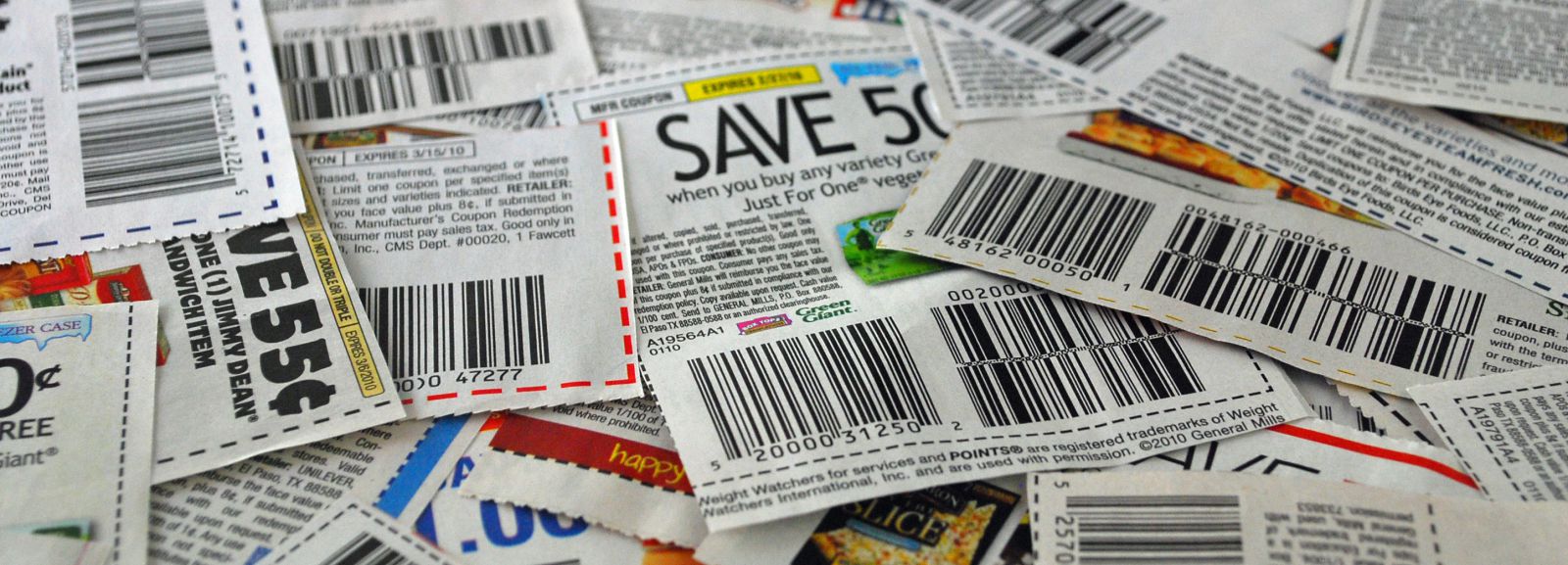The Business Benefits of Coupons

Despite relative recovery from the economic recession of the past few years, small businesses are still suffering from consumers cutting back on discretionary spending. Numerous industries, especially food service and hospitality, have been directly impacted by this negative shift. While the goal of business owners is to increase profit, external factors are causing customers to spend less during every visit. A potential solution to this issue, although seemingly unlikely, is the use of coupons.
How could offering items at reduced prices possibly benefit a small business? Remember that as the economy slumps in any given area, coupon usage will rise among customers, since rough financial times affect them as well as businesses. Promotions and discounts are attractive; everybody loves a good deal. Giving out coupons during economic declines would prove to be a smart business decision, as it would take advantage of the fact that more consumers are apt to use them.
Since they are essentially a form of marketing, coupons function similarly to print ads. They do not directly contribute to more profit. Instead, they develop brand image by boosting brand awareness, which in turn drives more potential customers into a business. Coupons can urge people to visit a business location, entice them to go to a sale, reward them for shopping, and build traffic on normally slow days. Once they have brought those people into business establishments, coupons begin to help businesses make money, because consumers will be motivated to spend more than the incentive cost of the coupon in their purchases. Opportunity for profit also exists in the sale of items related to those being discounted.
Providing coupons can lead to several other benefits. The three-fold nature of the coupon— to attract new customers, to keep current customers coming back, and to re-activate former customers— takes business away from competitors. Depending on the distribution method, marketing areas can be expanded, and coupons improve the customer conversion rates of every channel through which they are distributed. Additionally, the unique and trackable codes that can be assigned to coupons make them easily measurable. Assessing the effectiveness of a campaign is as simple as determining how many coupons were redeemed by customers.
Coupons are a business necessity these days, so it is no longer a question whether or not a business should offer them. When creating coupons, it is important to present a solid deal with a discount, bonus, premium, or free piece of information. High percentages for a discount work best when the product is well-known. Coupons should be specific rather than all-encompassing, applying only to a single product instead of offering a large store-wide discount. Broad, one-time promotional deals do not encourage repeat customers.
Expiration dates are also crucial in coupon creation. Time limits on coupons should not be too short, since few customers will need a product or service in such a small amount of time. They should not extend for too long either, because that would defeat the purpose of attracting customers with a limited-time offer. As a general rule of thumb, a business should figure out the usual timespan it takes before a customer returns and then divide it in half to calculate the expiration date on a coupon.
The coupon itself should look appealing, written with commanding, attention-grabbing headlines. Illustrations or images should be added for visual interest, in addition to the company logo for building brand awareness.
After coupons have been produced, the campaign in which they will be used must be designed. The type of campaign depends on the goals of the business. If the aim is to increase loyalty, a punch card system of tiered discounts would be a good approach. If the intention is to widen company reach, social media and email marketing campaigns to prospects would make for a better structure. Regardless of the campaign type, coupons are most effective when they feature either percentages greater than 20% off or definitive amounts off such as $5, $10, and $20.
The deal itself, however, must be reasonable for both the consumer and the company. A business must make sure that it can afford the planned discount for the time that it will be offered, to be certain that money will not be lost. Freebies should generally be avoided. While free products do attract people, they will probably not return for further purchases. A better deal would be to offer 50% off on one item, or a free item with an additional purchase.
Coupons tend to work best for local deals at location-based, product-oriented businesses, and there are many ways that they can be advertised and distributed. Print ads, websites, email campaigns, social media sites, and QR codes are all acceptable distribution channels, but delivery methods vary by audience and target market. Thus, a business should test each to figure out what methods work most effectively for which customers.
Offline distribution channels include local newspapers, Valpaks, flyers, postcards, community bulletin boards, and niche magazines, while online distribution channels include email newsletters, company websites, Facebook, Twitter, Yelp for Business, Groupon, and coupons.com. QR codes are considered a mobile distribution channel, convenient for customers who access the Internet primarily via smartphone. Scanning the code can immediately redirect the customer to a webpage with a coupon.
There are still different approaches as to how coupons are distributed via these channels. In general, coupons should be awarded to groups of customers smaller than the entire customer base. A business could, for example, reward new customers by giving them coupons right after their first purchase, improving their chances of returning and encouraging future purchases.
Plenty of digital coupon strategies can also be utilized. Person-to-person communication is one of them. If a business is messaging back and forth with a particular customer for longer than two or three messages, the conversation should be concluded by giving a coupon, which should match the topic of the messages if possible. This approach is useful when businesses are interacting with bloggers, potential partners, and customers with questions. Company social media accounts can also be monitored, and coupons can be given out as a thank you to customers who have mentioned a business favorably. Digital coupons can even be sent automatically to customers on their birthdays or anniversaries, strengthening the customer/business relationship by adding a personal touch. No matter what strategy is used, any coupons awarded online should be exchanged for email addresses, so a business can grow a database of prospects and customers for marketing and newsletter purposes.
At its core, a coupon is basically a promise a business makes to prospective customers that they will be able to purchase items or services for less than at other businesses; therefore, any business can find a way to use coupons, tailoring them to the needs of their establishment. With coupons being so commonplace, customers have actually come to expect them, and some businesses are at a risk of losing potential sales simply by not offering coupons while their competitors do. No business should put itself at that disadvantage. Starting up a coupon campaign today, or continuing an existing one, could only serve to boost a business’s profits, traffic, and brand image.
Filed under coupons, discounts, small business, brand image, brand awareness, traffic
 Fast.
Fast.
Proprietary data structures and functionality developed efficiently allows for traversing your data quickly and efficiently.
 Intuitive.
Intuitive.
User adoption is the most crucial aspect with implementing a new CRM in any business. Friendly and easy to use interfaces make this a breeze
 Secure.
Secure.
Protecting your business data, clients’ personal information and securing your companies processes are paramount with surpassed industry standards